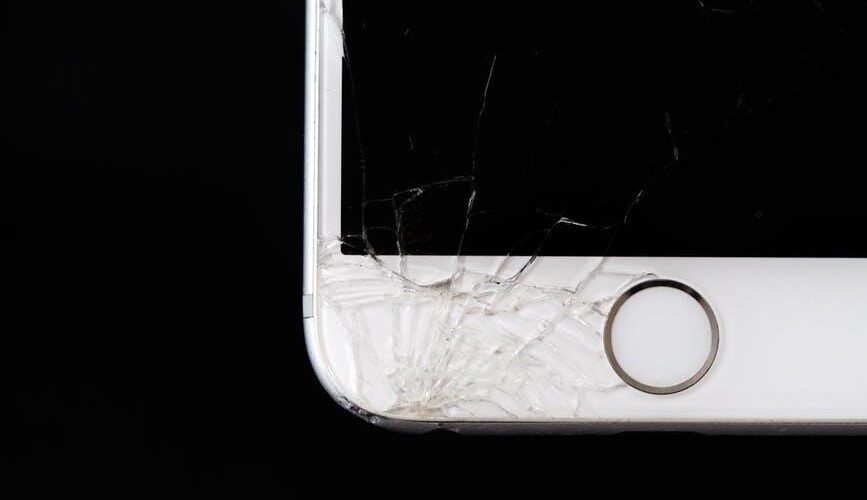Dropping your iPhone can be a heart-stopping moment. Especially if you pick it up to find the LCD screen cracked or unresponsive.
iPhone LCD damage is a common issue that users face. Whether from a fall or just wear and tear, it can make your phone hard to use.
Knowing how to handle this situation saves time and stress. You have options, from repair services to DIY kits.
This blog post seeks to shed light on different types of iPhone LCD damage, their causes, symptoms, and potential solutions. Keep reading.
Cracked Screen
Cracks on an iPhone screen can vary in size. A small crack might not seem like much, but it can grow.
Dust and moisture can enter through cracks. This can lead to more damage inside the phone.
A cracked screen can also cut your fingers. You might find it harder to read the screen or use touch features. If this happens, it’s time to look at repair options.
You can visit an Apple store or a certified repair shop. Some people use at-home repair kits.
It is key to fix cracks early. This helps avoid worse problems.
Dead Pixels
Dead pixels are tiny squares on your screen that stay black. They don’t light up like the rest.
One dead pixel may not disrupt much. But groups of them can spoil your viewing.
These dead spots can result from a flaw in manufacturing or after a hard knock. Sometimes they fix themselves; often, they don’t.
To fix dead pixels, try a software solution. Or, take it for professional repair.
Don’t ignore them. Acting fast can prevent more dead pixels from appearing.
Always remember, your iPhone’s screen can be delicate. Handle with care to avoid pixel problems.
Liquid Crystal Leakage
If your iPhone screen has spots or blurs, it might be liquid crystal leakage. This happens when the LCD is hit hard.
The liquid crystals, usually in line, shift out of place. Your display then gets strange marks.
It affects the screen’s touch and color. If you drop your phone or it’s pressed too much, watch out for liquid leaks. They can spread and ruin the whole display.
Get it to a repair service fast, click to fix your iPhone now. Early fixes can save the screen.
Be gentle with your iPhone to prevent leaks and always use a protective case. Handle your device with care to keep the display safe and clear.
White Screen of Death
When your iPhone screen goes completely white, it’s called the White Screen of Death. It’s a common problem.
The screen shows nothing but a blank, white display. It can happen without warning.
This issue might mean a software crash or hardware problem. You may try a hard reset first.
Press your home and power button together for a few seconds. If that doesn’t work, check for iOS updates or restore your iPhone using iTunes.
For hardware issues, a professional repair is needed. Don’t let this problem linger. A quick fix could get your iPhone back to normal.
Black Screen Issues
Sometimes the iPhone screen goes completely black and won’t turn on. This is different from the White Screen of Death.
Your device seems off, and the buttons do nothing. Often this black screen happens suddenly.
It could be a software glitch or a hardware malfunction. Try a force restart. For an iPhone 8 or later, press and release volume up, then volume down, and then press and hold the side button.
If the screen stays black, plug it into a power source. If it still doesn’t work, it might need a professional repair. Always back up your iPhone to save your data.
Vertical or Horizontal Lines
Vertical or horizontal lines on an iPhone screen can be worrisome. These lines may appear as constant streaks across your screen. They often signal an issue with your screen’s connection.
Sometimes, they’re the result of dropping your device or exposing it to water. To fix this, start with a simple restart of your iPhone. If the lines persist, a hard reset may be the next step.
For persistent lines, phone technician help is usually needed. Do not ignore these lines, as they can grow into bigger problems. Protecting your iPhone with a case can help prevent such damage.
Flickering Display Issues
A flickering iPhone screen is a sign of trouble. It usually shows up as a rapid pulsing of the display’s light.
This flicker can happen at any time. It makes it hard to use your phone.
Simple things like typing a text or browsing can become challenging. Flickering may mean a hardware fault inside the phone. This can also be caused by a software glitch.
Restarting your iPhone might solve the problem. But if the flickering remains, it’s best to get professional help.
Don’t wait too long. Fixing a flickering screen quickly can keep your iPhone running smoothly.
Always keep your software up to date. This helps prevent many display issues.
Touch Screen Unresponsiveness
When your iPhone’s touch isn’t working, it can be frustrating. This is called touch screen unresponsiveness.
The screen might not respond to your fingertips. This can make basic tasks difficult.
Sometimes the screen might work in one moment and not the next. This could be from a software glitch or a dirty screen. Make sure your hands are clean and dry when you use your iPhone.
Restarting your device sometimes fixes the issue. If it keeps happening, it might need a repair.
Protect your iPhone by keeping it in a safe place. This can help prevent touch problems.
Seeking Professional Help
If your iPhone falls victim to LCD damage, trying DIY solutions is not advised due to the complex nature of modern smartphone technology. You might end up causing more harm than good! Instead, always opt for professional repair services where experts have the appropriate training and tools to handle these delicate processes.
Overcoming iPhone LCD Damage Challenges
iPhone LCD damage can range from minor inconveniences to major obstacles that disrupt our daily lives. While prevention is key, encountering such issues requires swift and professional attention. Embracing expert repair solutions is the best course of action to ensure the longevity and optimal functioning of your device.
Remember, treating iPhone LCD damage with care can save you from the hassle and keep your digital world bright and operational.
Did you find this article helpful? Visit more of our blogs!






Add comment